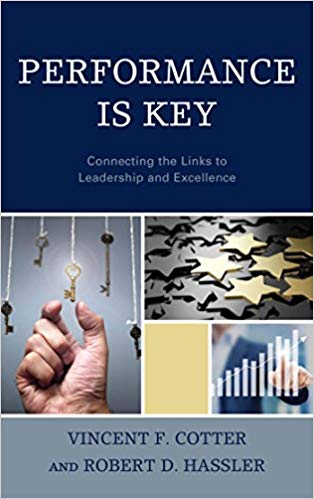Money Probably Isn’t Holding You Back From That Change You Keep Talking About

Guest authors Dr. Vincent F. Cotter and Dr. Robert D. Hassler are co-founders of the Exemplary Schools Organization. Both are former superintendents with a career that focused on improving student achievement and building an atmosphere of continuous improvement.
As former superintendents with a demonstrated record of improving student performance, we were intrigued as to why some districts with substantial resources had not reached a higher level of academic performance while others with minimal resources consistently outperform those schools with more resources. Though we may be retired, we continue to work with districts as part of our partnership building Exemplary Schools Organization.
Upon commencing our research for our first book Performance is Key, we relied on our professional journey along with effective schools research and models for continuous improvement.
By eliminating the common and frequently endorsed theories on poor performance and “silver bullet” solutions often proposed by state legislators, our research appeared to reveal a fairly obvious conclusion: Districts that were willing to commit to an instructional improvement plan that focused on high impact and outcome elements would ultimately reap the benefits of improved student performance.
Additional discussions with school administrators, board members, teachers, and parents further highlighted the complexity of the challenge.
Everyone seems to be pointing the finger
When discussing higher performance with stakeholders in a district, we were often met by indifference.

Superintendents indicated they were bogged down with minutiae, mandates and other priorities from their board.
Board members, conversely, indicated that it was really the superintendent’s responsibility to handle performance matters.
Teachers firmly declared that there was no need to focus on improvement, as this was their daily priority.
Parents simply wanted a good school.
Should we conclude that no one cares about improvement? Absolutely not.
What this reveals is that with so many stakeholders with varying perspectives, managing a school district’s internal dynamics is a formidable challenge.
It’s a challenge for those willing to willing to embrace the improvement process, and it’s a challenge for those wishing to ignore the realities of the improvement process.
Effective district leaders place emphasis on a culture of learning
Schools and districts are complex organizations. On the surface, most schools and districts operationally appear very similar.

Having collaborated with many districts, our further examination has us believing they are very different. The internal dynamics and culture of the organization drive its outcomes. A school or district’s decision making, prioritization of goals, the formulation of strategic plans and effective execution of those plans are a function of the organization’s internal beliefs, structures, processes, and leadership.
Adept leadership recognizes the importance of a school or district’s culture and relational dynamics within it as a critical factor in the success or failure of its mission. A school or district’s ability to grow, improve and meet its challenges is a function of the leader’s skill to navigate a vision through a gauntlet of stakeholders and layers of an organization.
Building a consensus to change the existing status quo is fundamental to an organization’s growth. In our second book, Igniting School Performance, we recognized the importance of being both synergistic and strategic.
This combo, which we call synertegic, combines both the skills of “synergy” and “strategy” and enables leaders to build support for their mission and execute a plan for success.
Sustain change by building capacity for continuous improvement
A district needs to adhere to an improvement process that capitalizes on building internal capacity. By investing in collaborative leadership strategies, leaders can shift their organization’s internal dynamics to one of continuous improvement.
Armed with data derived from assessment tools, leaders can focus on systemic issues that impede achievement.
Creating a sense of urgency and building a consensus among stakeholders are priorities for success. With this focus, a pathway that leads to sustainable improvement can be illuminated and higher performance can become a reality.
Learn more about the authors and their work at www.exemplaryschools.org

